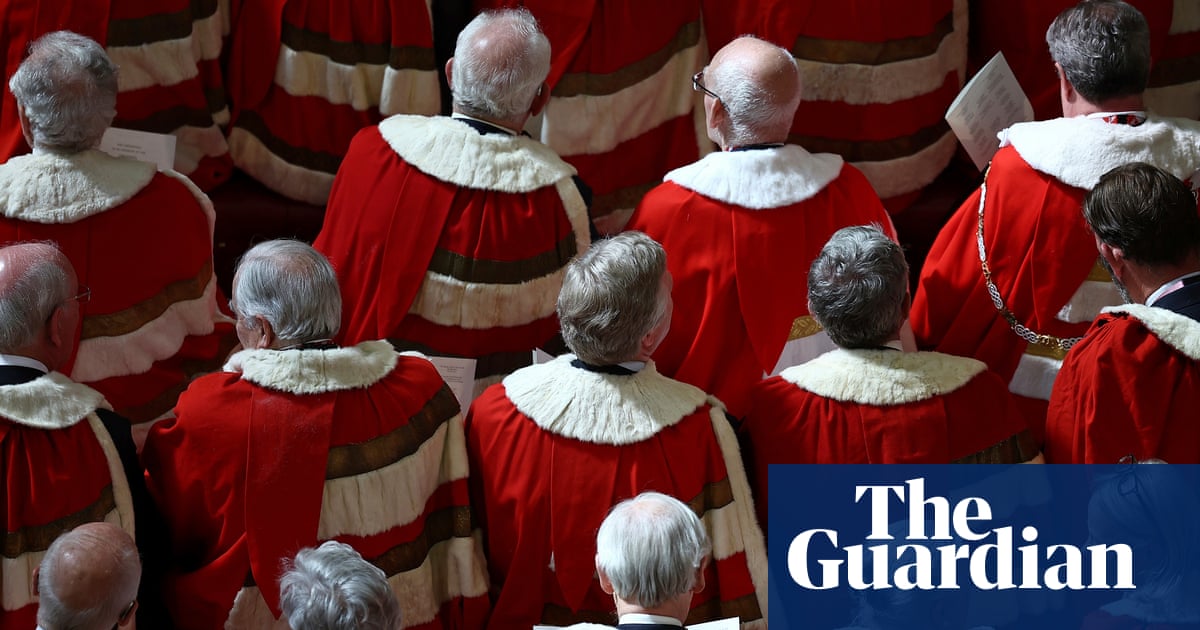Plans to change theHouse of Lordsby removing only the remaining hereditary peers do not go far enough in the eyes of the public, polling suggests.
Just 3% of those surveyed backed the government’s plans, with 56% of respondents agreeing that ministers should limit the number of peers the prime minister is able to appoint to the upper chamber for life.
The hereditary peers bill is due to enter its report stage in the House of Lords on Wednesday, after five days of debate with line-by-line consideration of more than 100 amendments during March and April.
The bill fulfils part ofLabour’s manifesto pledgefor “immediate reform of the House of Lords”. Labour described the Lords as “too big”, with changes “overdue and essential”, promising not just toremove the hereditary peersbut also to introduce a mandatory retirement age of 80, participation requirements, make it easier to remove disgraced members, and overhaul the appointments process to improve the quality of peers.
Despite these pledges, ministers argued against every amendment proposed to the bill that would have implemented these changes. Instead, the government said it needed more time to consider how to implement its commitments, and that the bill was “not the right vehicle”.
But “right now, the House of Lords has a legislative vehicle in front of it which is certain to pass. If peers want change, they should seize it,” according to Prof Meg Russell, the director ofthe Constitution Unitat University College London, which commissioned the polling by YouGov.
Russell said there would probably not be another opportunity to overhaul the Lords for decades. The last major bill was in 1999, in what was meant to be a two-stage reform starting with theremoval of 667 hereditary peers.
“You just would not believe how slowly it moves,” she said. “Basically, it’s impossible to get agreement on anything, inside parties as well as across parties.
“No bill has reached the House of Lords coming from a government in 26 years and if you haven’t got a government bill it’s very hard to achieve any legislative change, which is why I’m saying seize it. These things come around on roughly a generational kind of cycle.”
A longstanding cross-party consensus exists that the House of Lords needs to be smaller, a position backed by the public, 71% of whom think it should be no bigger than the House of Commons’ 650 MPs.
But even as the 86 hereditary peers start to pack away their ermine, a steady flow of 76 newly ennobled life peers since the election will limit the effectiveness of the government’s changes in reducing the overall size of the chamber, which now has 859 members. Some hereditary peers may receive life peerages to allow them to stay.
“The problem here is that whenever a prime minister over-appoints, particularly to their own party, the PM that follows them feels the need to over-appoint to counteract those appointments,” said Russell. “And that’s how it gets bigger and bigger and bigger, and it’s completely unsustainable.”
Peers are engaged in last-ditch efforts to make the bill more substantial. Among theproposed amendmentsare a requirement on the government to bring new draft legislation for further changes within two years.
